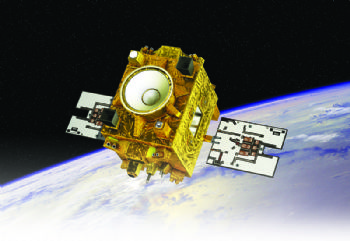
New developments in the theoretical knowledge of the very smallest particles on the planet mean that some physicists are now calling into question the principle of ‘equivalence of inertial and gravitational mass’.
To examine these ideas, the National Metrology Institute of Germany (PTB) in Braunschweig has developed cylindrical test masses (cylinders) that are made to an accuracy of 2-3µm for all geometric characteristics, using a high-precision lathe from Benzinger — fitted and an OMP400 probe from Renishaw (
www.Renishaw.com).
Daniel Hagedorn, project leader and manager of PTB’s surface metrology working group, says: “The machines we have today can achieve positioning accuracies of 2-3µm in one or two directions without any difficulties, but for our test masses, we need to achieve this high level of precision in all three dimensions — not only at individual positions but also on planes, cylinder surfaces and angles.”
PTB was commissioned to produce 10 cylindrical test masses for MICROSCOPE (Micro-Satellite à traînée Compensée pour l’Observation du Principe d’Equivalence), a 300kg mini-satellite operated by CNES, the French government space agency.
Together with other partners (including the European Space Agency), MICROSCOPE will test the universality of the equivalence principal. Each of these masses is around 80mm long; the larger ones have an outer diameter of 70mm, and the smaller ones 35mm.
Made from platinum-rhodium (PtRh10) and a titanium-aluminium-vanadium alloy (TiAl4V6), the cylinders are placed concentrically inside a differential accelerometer for testing.
This configuration ensures that the moment of inertia of both cylinders is on the same axis. The PtRh10 cylinders serve as reference; the others — made from different materials — are subject to acceleration measurement to verify whether the equivalence principle of gravitational and inertial masses remains valid at a measurement accuracy of 10-15µm.
Manufacturing the test masses to the required level of accuracy was challenging, which is one reason why the entire production process has to be completed in one step, without removing and re-clamping the workpieces when machining them on the high-precision Benzinger TNI Preciline lathe.
To start with, deviations of up to 0.01mm were evident in repeated process attempts, and Dr Hagedorn knew that PTB needed to integrate high-precision measurement directly into the machining process. He focused on comparing and assessing the accuracy and repeatability of measurement results.
“We concluded that the only solution capable of meeting these standards would be using a high-precision probe like the Renishaw OMP400.”
The OMP400 probe uses a measurement system based on strain gauge technology, allowing it to respond to even the lightest contact forces; moreover, the probe is not affected by reseating forces and minimises the hysteresis commonly seen in measurement applications — enabling it to easily achieve accuracies of less than 5µm.
A special measurement routine prevents inaccuracies arising from the probe contacting the surface too quickly. If the software detects interference caused by probe vibration, it stops contact or prevents the recording of a measurement value.
Dr Hagedorn says it is only possible to obtain reliable results if the measurement positions are approached at an appropriate speed. “By combining this technology with just a few other measures, we have been able to reliably maintain the repeatability of the probe to within 1µm.
The PTB team applied a complex verification process to check the results of the OMP400 probe and high-precision lathe solution.
After machining a number of contours, they measured the results on the machine itself and on a co-ordinate measuring machine. Calibrated reference workpieces were also measured on the processing machine, using the probe, and on
the external co-ordinate measuring machine.
The team compared all of the measurement results to obtain compensation data, which was used to update the lathe’s CNC system when taking measurements with the OMP400.
To measure roundness and diameter, the probe recorded data for more than 30 circular measurement points. Cylindricity was measured following a similar pattern, but based on five circular measurements over the entire length
of the cylinder.
The measurement of the six ball indentations on the front face of the cylinder proved particularly challenging. These indentations, which act as bearing points when the cylinder is placed in the differential accelerometer, have a maximum diameter of just 1.2mm. PTB’s Heinz-Peter Heyne developed a special silicon-ceramic probe stylus just 0.3mm in diameter for measuring these points.
After producing multiple workpieces for testing and comparison, Mr Heyne manufactured the final test masses in PtRh10 and TiAl4V6, using what he termed an “iterative process”.
He machined the outer diameter of the workpiece to an oversize of around 0.01mm in multiple steps. After taking and recording the measurements at each stage using the OMP400 probe, he machined the component to its final dimensions, achieving success at the very first attempt.
“As we had planned, we were able to achieve ±1µm accuracy for all characteristics. The accuracy and reliability of the Renishaw OMP400 probe was a key factor in our success. Considering that the platinum-rhodium required for the quantities we are producing cost tens of thousands of euros, we are very pleased with these results.”